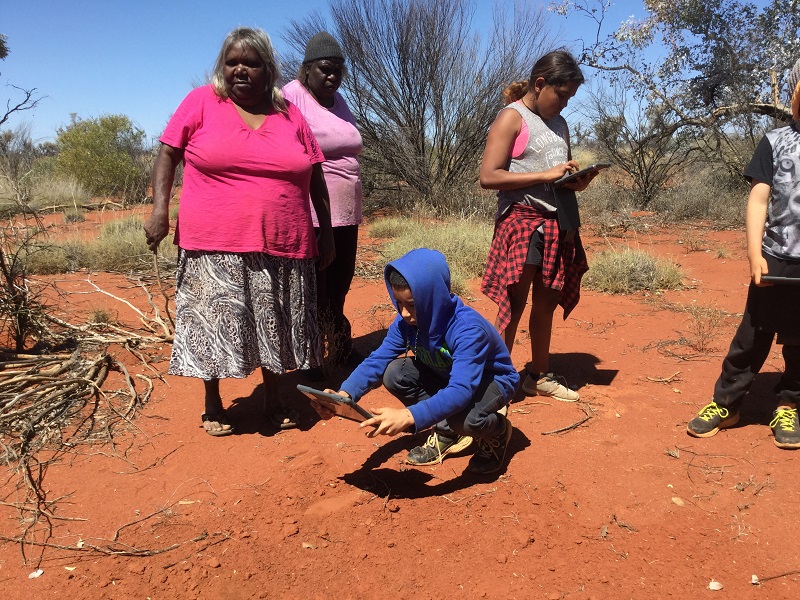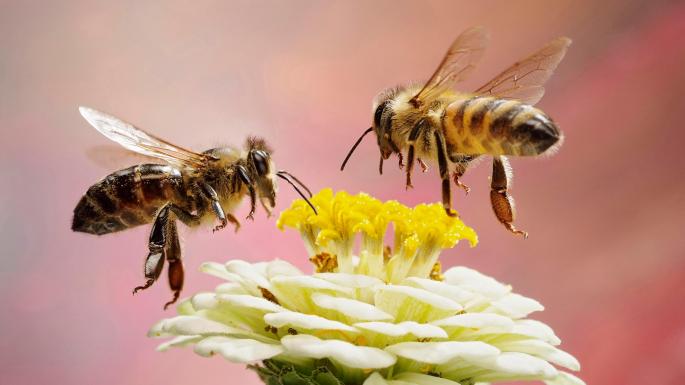
Science at the pub – what a way to start your week! Credit: Miriam Slater
A neutron walks into a bar and asks, “how much for a beer?” the bartender replies, “for you, no charge”…lol, science jokes. We’ve got a few up our sleeve and what better place to share them, then when you’re waiting in line for that first frosty one at the pub before Pint of Science kicks off.
Yes, the world of science can produce a few lols, but it can also be an overwhelming yet wonderous beast. So, for three days in May science is getting out of the lab and into your local, with pint-sized science bar snacks ready for you to digest over a frothy beer or two.
Pint of Science festival is an international festival held in Australia on the 20-22 May celebrating, informing and captivating pub goers in 53 venues across the country. Look out for our speakers in venues across the nation. We’re showing how CSIRO is solving the greatest challenges through innovative science and technology by bringing everything from honeybees to a digital representation of your body, to a pub near you.
Digital you
Imagine you are in a doctor’s office and they are talking through the treatment of a disease such as osteoporosis. What if the doctor could show you your body now, in 1 year, in 5 years, in 20 years; with every range of treatment option? Seeing each option with your body “fast-forwarded” and choosing the best course of action?
This is the type of technology Dr Simon Harrison uses his knowledge in science and engineering to develop. With a passion for health and the performance of our bodies, in particular, figuring out how to get the most out of life as we age, Simon simulates the body’s interactions with its environment to understand how to improve performance and health and to reduce injury.
So, what would Simon like to use this exciting and game-changing technology for personally?
‘I’d love to be able to implement a range of diets in a simulation, including my favourite guilty pleasures, and see how much I could enjoy myself and stay healthy!’ says Simon.
‘I spend a lot of time thinking about my favourite sport, surfing, which like golf requires endless efforts towards mastery. Unlike golf, however, it is hard to practice when not in the water. I’d really like a simulation of surfing that could tell me exactly how to improve.’ he says.
Interested in the prospect of a ‘digital you’? Hear Simon’s talk at Richmond Bowling Club, Melbourne on the 21 May.

Artificial intelligence will unleash computers from behind screens. Shutterstock
Artificial intelligence will unleash computers from behind screens. Shutterstock
Science innovation that values diversity
Did you know that less than one in five Australian senior researchers are women? And that women only make up 27% of the STEM workforce? That’s not good enough, according to Dr Cathy Robinson.
Cathy leads and supports several initiatives that provide practical examples of how to accelerate innovation with ideas that value and enable diversity. This includes research with Indigenous and remote rural communities and scientists to accelerate collaboration and innovation in natural resource management, with the goals of delivering environmental, economic, cultural and social benefits.
As a STEM Superstar, leader of the Northern Oz Women Science Entrepreneurship program and facilitator of the Indigenous Innovation Alliance, Cathy uses available data to find ways to manage our landscapes in Northern Australia. But western science and technical solutions are only part of the puzzle. Indigenous communities’ own large parts of these regions and have knowledge that can really unlock ways to use and manage these unique land and seascapes.
Do yourself a favour and get along to the Red Brick Hotel in Brisbane on the 20th May to hear Cathy give some practical examples of how to enable Indigenous-led and women-led approaches to weave technical and local knowledge, values and interests to solve real-world problems.

Indigenous students learn how to track and record wildlife during Science Pathways trip to the edge of the Gibson Desert
Indigenous students learn how to track and record wildlife in the Gibson Desert. Cathy wants to increase diversity and collaborate with Indigenous communities to manage our landscapes.
Bee-ing healthy
Apart from making delicious honey, honeybees play a vital role in pollination. Around 35% of total food production relies on pollination from honeybees, and 75% of crops get some benefit from honeybee pollination services. Some beekeepers truck their hives all around the country to provide this pollination service to agricultural crops. Without honeybees, we would have no smashed avo or almond milk lattes. (shock! horror!)
Not only do honeybees have an interesting social structure and biology, but they are very important pollinators for food security and for natural ecosystems. Unfortunately, honeybee populations have been declining and are under threat.
Enter Systems Biologist, Dr Amy Paten. With a background in Animal Science, Amy originally started out doing research with livestock, looking at sheep and goat nutrition. It wasn’t until her PhD that Amy collaborated with a group that did some really cool research on honeybee development.
Want to know more about our favourite pollinators? Here are a few facts to get you buzzing.
- A honeybee colony consists of 20,000 – 60,000 bees and a queen. All the worker honeybees are female. The males (drones) do not do any foraging or work around the hive!
- Bees are very intelligent! They can recognise complex patterns and shapes (even people’s faces!) and odours, which is how they learn where to find food and how to get home, and they use a complex dance communication (the waggle dance) to tell their hive mates where the food is.
- The average worker bee lives for just five to six weeks. During this time, she’ll produce around a twelfth of a teaspoon of honey.
Get on down to King O’Malleys in Canberra on the 22 May and hear more from Amy on the threats honeybees face and what we’re doing to help them. You might even bee inspired to take your own small actions to help protect our honeybees and other pollinators.

Around 35% of total food production relies on pollination from honeybees.
Thirsty for more?
Head over to the Pint of Science webpage for a full list of speakers and to purchase tickets. Remember to follow #PintAU19
Not convinced? Here’s one more for free, we won’t tell anyone you heard it here first.
An infectious disease enters the bar. The bartender says, “We don’t serve your kind here” It replies, “Well you’re not a very good host.
You’re welcome.

